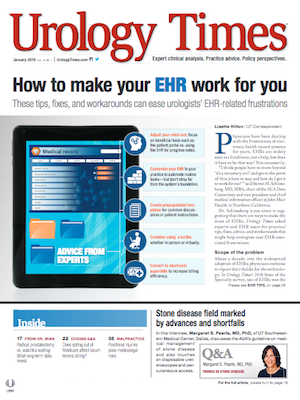Publication
Article
Urology Times Journal
How to make sense of the IRA aggregation rule
Author(s):
The rule must be applied when making a distribution from non-Roth IRA.
I rolled an old retirement account into a rollover individual retirement account (IRA), but then discovered that IRA aggregation rules may make contributing to a backdoor Roth IRA difficult going forward. How does one affect the other?
The IRA aggregation rule was created to limit the ability of taxpayers to use non-deductible IRAs as a tax shelter. A non-deductible IRA is often used when a high-income earner wants to save in an IRA, but they earn too much to contribute directly to a Roth IRA or qualify for the tax deduction of a traditional IRA. As a result, their only option is to contribute to the traditional IRA and not take the tax deduction, which effectively makes it a non-deductible IRA. Once in the non-deductible IRA, many physicians choose to convert the money to a Roth IRA-a process often referred to as a “backdoor Roth IRA.”
In an effort to prohibit individuals from “cherry picking” distributions from their non-deductible IRAs and considering them as taxable or a return of principal, the IRS mandated that all IRAs be aggregated when determining the tax consequences of making a distribution.
Also by Jeff Witz, CFP -Flexible spending vs. health savings accounts: How to choose
As an example, assume you rolled $50,000 from a previous retirement account into an IRA rollover. Now you want to take advantage of a backdoor Roth IRA and contribute $5,500 into a non-deductible IRA with the intention of converting it to a Roth. When the conversion takes place, the IRS considers it a distribution from the non-deductible IRA, and the IRA aggregation rules must be applied. To determine what amount is return of principal versus what amount is taxable, you must divide the converted amount by the aggregate value of all non-Roth IRA accounts.
In this example, you would divide $5,500 by $55,500 ($50,000 + $5,500), which is approximately .0991. This means that $545.05 ($5,500 x .0991) is considered return of principal and can be transferred into the Roth IRA tax free; the remaining $4,954.95 ($5,500 – $545.05) is subject to taxes. The taxable amount is taxed at your top marginal tax rate. If we assume a top marginal tax rate of 35%, then the tax due on the transfer is $1,734.23 ($4,954.95 x 35%).
There are two different ways you can handle the tax payment. You can net it out of the total amount transferred into the Roth account. In our example, that would result in $3,220.72 ($4,954.95 – $1,734.23) being transferred into the Roth account after the taxes had been paid. The other option is to transfer the full $4,954.95 into the Roth account and then pay the taxes due when it comes time to file your taxes.
Next:"Paying taxes as a result of the IRA aggregation rule isn’t all negative."Paying taxes as a result of the IRA aggregation rule isn’t all negative. By paying taxes when the conversion and transfer occurs, the next time you go through this conversion process, you get to reduce the pre-tax balance by the amount you paid in taxes the year before.
Using our previous example, next time the conversion takes place, instead of dividing $5,500 by $55,500, you would divide it by $53,765.77 ($55,500 – $1,734.23). Investment gains and losses in the pre-tax account may result in different amounts prior to subtracting the $1,734.23, but for simplification purposes, this example will work. Each year taxes are paid on the conversion, it further adds to the basis and reduces the amount used to determine how much passes to the Roth RIA tax free versus amounts that are taxable.
Read -401(k) with a previous employer: What are your options?
Overall, IRA aggregation rules can be very complicated and may apply to many other scenarios related to distributions from your IRAs. We recommend speaking with your financial adviser about the impact of opening different types of IRAs and how it may affect distributions in the future.
What types of accounts are subject to the IRA aggregation rules?
The IRS requires you to use the IRA aggregation rules to compute the pro-rata taxable and non-taxable amount when a distribution is made from any non-Roth IRA. This includes traditional IRAs, non-deductible IRAs, SEP IRAs, and SIMPLE IRAs. Notably, the aggregation rule is only for IRA accounts. Employer retirement plans such as 401(k)s, 403(b)s, or profit-sharing plans are not subject to these rules. For this reason, some may consider rolling existing IRA accounts into employer-sponsored plans to minimize possible tax impact.
Additionally, inherited IRAs are also exempt. Finally, an individual’s IRAs are never aggregated with a spouse’s. Each person’s aggregation circumstances are calculated separately.
Mr. Witz is educational program director at MEDIQUS Asset Advisors, Inc. in Chicago. He welcome readers’ questions and can be reached at 800-883-8555 or witz@mediqus.com.
The information in this column is designed to be authoritative. The publisher is not engaged in rendering legal, investment, or tax advice.






















